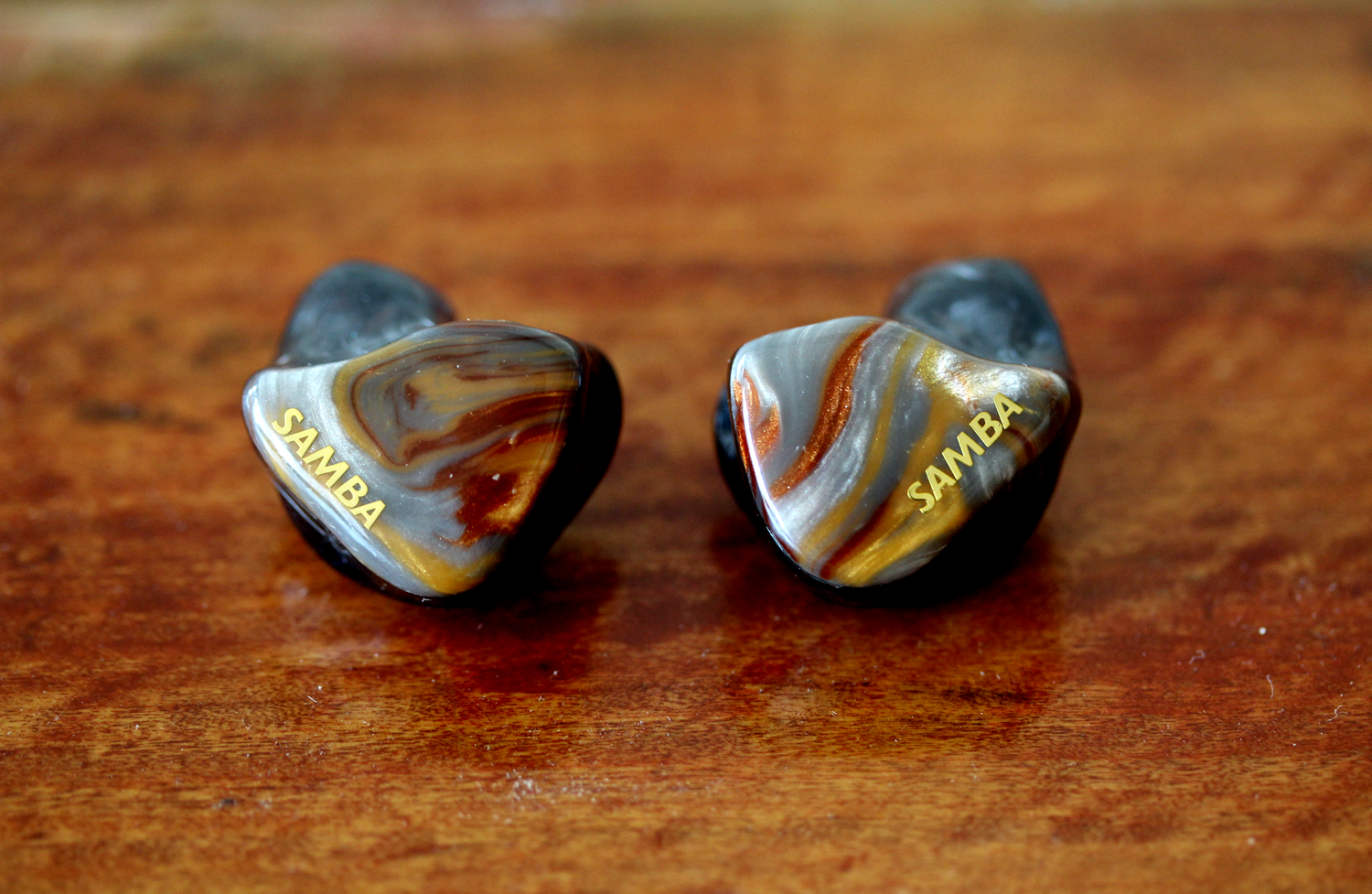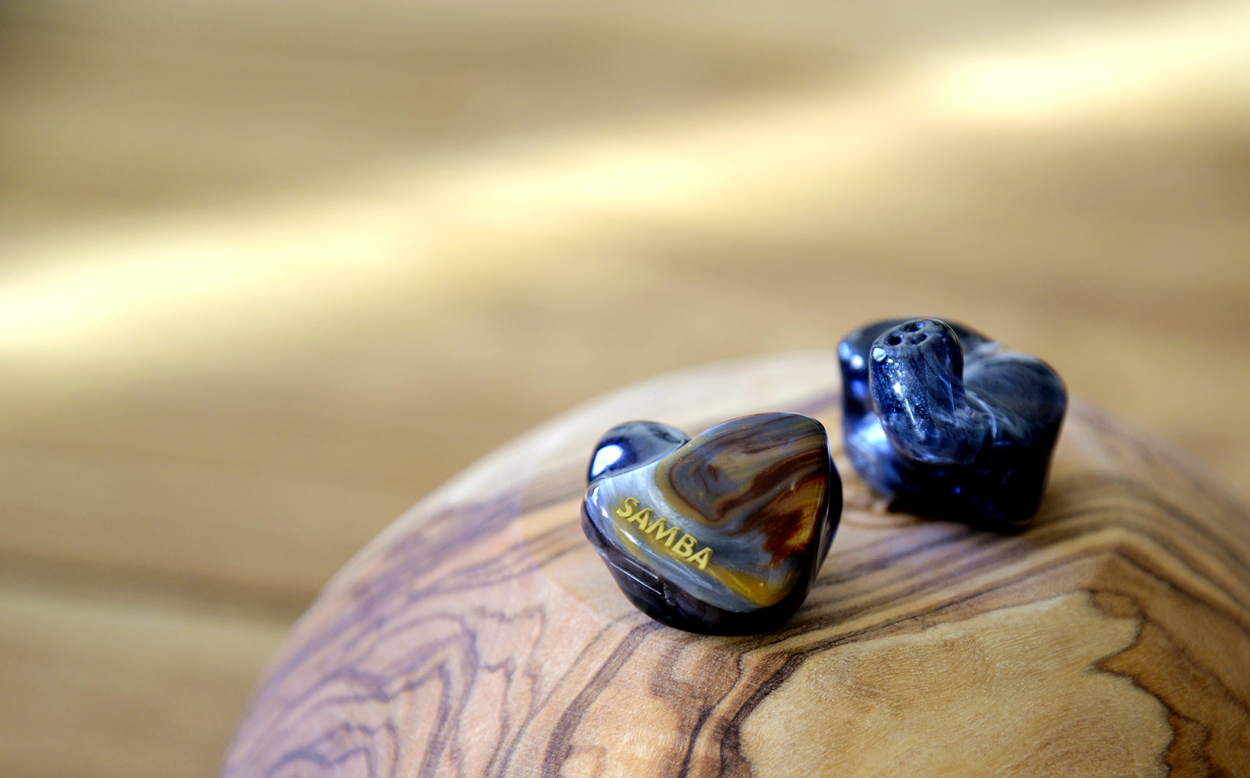Bass
Samba’s bass represents some stereotypical traits of BA drivers: it’s a controlled bass, tight and punchy. As a result of a fairly linear relationship between the sub- and mid-bass it’s relatively neutral in quantity, with a tasteful boost in impact. It gives it a fun touch, especially for electronic music. Even so, it’s a BA bass that comes with some qualms of its own. For starters, its low-end extension could be better. As a result, there isn’t a lot of weight behind the impact, and it lacks a bit of bodily feel. In addition, its pace isn’t overly quick. It is however a well-defined and detailed bass, with good separation between the bass lines.
In addition, Samba’s bass is somewhat dry in tone as a result of an upper-bass dip. Attenuating the upper bass is an essential prerequisite for creating the Samba’s exceptionally airy stage, although it takes some warmth from the tone. As a result, there’s a trade-off between timbre and cleanliness, although it’s one that naturally follows from the intention of the tuning. Taken together, Samba’s tight bass contributes to its performance, while adding a fun touch.
Midrange
Samba’s midrange is exceptionally clear, and well-defined – the combined result of its laid-back upper-bass, excellent top-end extension, and 6 KHz peak. While the 6 KHz peak creates a clean and accentuated sound, it’s the high level of resolution and transparency that leads to a pure reproduction of notes, while the laidback upper-bass helps to create an airier stage. The result is a very clean image, even uniquely so. In addition, there’s an additional trait contributing to its overall precision: its quick pace. Much like resolution or transparency, speed isn’t something you tend to miss until you hear something better. A precise on- and offset of notes not only contributes to a more organized sound, it adds a different form of detail to the music – detail in timing, allowing subtle in-between guitar riffs or other fast notes to emerge. As a whole, Samba’s midrange comes across as organized and highly detailed.
Attenuating the upper bass not only creates an airy stage structure, it results in a leaner body of instruments – which too aids the separation, by creating an optimal relationship between the instrument size and stage dimensions. The downside however, is that it lacks a bit of warmth for it to sound natural, or completely accurate in its timbre. Samba’s midrange comes relatively close to neutral in tone, but its instruments have a brighter touch due to the lower treble emphasis. Nevertheless, it’s a tuning that works excellently for string instruments, and classical music in general – piano’s and violins sound remarkably clear, with a nice touch of sparkle. But Samba also displays affinity for electric guitars – a high-pitched guitar has the freedom to howl and soar. And of course, Samba remains an all-time favorite for electronic music: a brighter tone, and extraordinary precision – a hard combination to beat.

As with Dita’s Dream, Samba’s vocals are slightly laidback, and centered within the three-dimensional image. The central position in turn aids in its layering ability. But as a result of its laidback lower midrange, Samba’s vocals are not overly large in size – it’s not a dense, full-bodied vocal presentation, and especially deeper male vocals might miss a touch of warmth and body. But even though Samba’s vocals aren’t warm enough to be classified as natural, it’s a vocal presentation I can sincerely enjoy. As a result of its outstanding transparency, there’s an exceptional clarity in their portrayal, like watching a 4K screen. It’s a detailed and highly focused vocal presentation, which works well within the presentation.
Treble
Samba has a slightly forward treble, resulting from its 6 KHz peak. In addition, a light bump in its upper treble provides an extra touch of air, while benefiting its transparency. The treble tone isn’t as bright as NT6-pro or Katana, but it’s still brighter than neutral – there’s a nice touch of sparkle that adds some liveliness to the presentation, and aids in the rendering of fine detail. But more than anything, this is a technically highly capable treble: well-defined, with a rapidly quick decay – an articulate treble. Its timbre won’t be the most accurate, but it’s a treble that contributes to the overall high level of precision, especially due to its excellent top-end extension.
However, while the treble isn’t harsh by any means, it won’t be the smoothest treble for sensitive listeners. Source pairing is worth taking into consideration, as in this case, the Samba benefits from the smoother AK. In addition, there can be traces of sibilance, even though it generally stays within a safe margin. But for me personally, it isn’t a sharp treble – it’s a treble presentation I can definitely appreciate.



